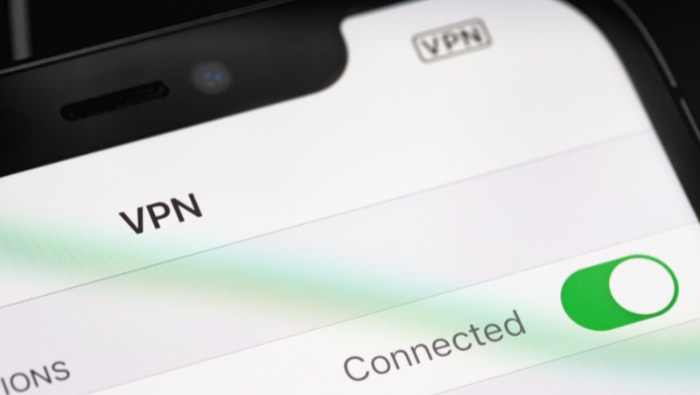How Stealth VPN Works and Why It's Important

Some networks do not just block websites; they hunt for the tools people use to slip past those blocks. Stealth VPN exists for those moments.
A stealth, or obfuscated, VPN takes normal encrypted VPN traffic and disguises it to look like everyday internet use, often similar to regular HTTPS in your browser, so censors and filters struggle to spot it. Unlike a standard VPN, which can be flagged by its protocol fingerprints, a stealth setup tries to blend into the noise.
This kind of protection matters to people in heavily censored countries, travelers stuck behind aggressive hotel or airport firewalls, and high risk users such as journalists or activists. Even if you only want a more private connection on hostile Wi-Fi, knowing how Stealth VPN works can help you choose the right tool.
Basics of VPNs and Obfuscation
Most people hear “VPN” and think of a simple privacy tool, but the mechanics behind it shape how visible you are to networks and censors. Before looking at stealth techniques, it helps to see how ordinary VPN traffic looks from the outside and why that makes it an easy target.
How a Standard VPN Works
A standard VPN creates an encrypted tunnel between your device and a VPN server. Your internet traffic goes through this tunnel first, then exits to the public internet from the server instead of directly from your own connection.
To outside sites, it appears as if you are browsing from the VPN server’s location, not your home, office, or hotel.
Inside that tunnel, your data is encrypted so your internet provider or network administrator cannot read the contents of your traffic. They can still see certain details, such as the VPN server’s IP address, the protocol in use, and the amount and timing of the data you send and receive.
Common VPN protocols include OpenVPN and WireGuard. OpenVPN usually runs over UDP or TCP on specific ports and has a packet structure that DPI tools can recognize.
WireGuard uses modern cryptography and has its own, fairly distinct packet patterns. Even though the data inside those packets is encrypted, the outer shape of the traffic, such as handshake style and timing, often creates a visible VPN “signature”.
What Makes a VPN Stealth or Obfuscated
A stealth or obfuscated VPN tries to hide those recognizable VPN signatures so your traffic looks like something ordinary, such as regular HTTPS web browsing. Instead of showing clear OpenVPN or WireGuard patterns on the wire, the VPN traffic is wrapped or reshaped so that filters see only common, expected protocols.
Encryption protects the contents of your data, for example what website you are loading or the messages you send. Obfuscation focuses on hiding the fact that a VPN protocol is in use at all.
In other words, encryption shields what you say, while obfuscation tries to hide how you say it from systems that scan for VPN fingerprints.
By altering headers, packet timing patterns, or even the way the first connection handshake appears, an obfuscated VPN aims to blend into normal traffic. To a censor or firewall, the goal is to look like routine HTTPS on port 443, not a distinct VPN tunnel that should be blocked or throttled.
Why Networks and Censors Target VPN Traffic
Many governments, companies, and schools treat VPNs with suspicion because VPNs can bypass filters and monitoring tools. If a network enforces strict content rules or tracks user activity, an encrypted tunnel that hides websites and services looks like a problem that needs to be controlled.
Deep Packet Inspection, often shortened to DPI, gives those networks a way to spot unwanted traffic. DPI systems analyze packet headers and patterns beyond simple source and destination information.
Even without reading the encrypted contents, they can detect known VPN protocols, handshake styles, and metadata.
Once VPN-like patterns are detected, networks can:
- Block connections that match known VPN signatures.
- Throttle or slow suspected VPN traffic.
- Allow only approved VPNs that follow internal policies.
Censors may apply these controls to limit access to foreign news, social media, streaming services, or tools that provide anonymity. Because standard VPN protocols tend to be relatively easy to fingerprint, they become straightforward targets for filters that rely on DPI and pattern matching.
How Stealth VPN Technology Actually Works

Stealth VPN technology does more than encrypt data. It reshapes and disguises VPN traffic so filters and censors have a harder time spotting that a VPN is in use at all.
The methods behind that disguise range from simple scrambling to full protocol camouflage that imitates ordinary web browsing.
Traffic Wrapping And Protocol Camouflage
A common approach to stealth is to wrap VPN traffic inside TLS or SSL, the same encryption used for HTTPS websites. The VPN client first creates a TLS session to the server, usually on port 443, then sends VPN packets inside that secure channel.
To anyone watching from the outside, the flow looks similar to a user visiting a regular secure website.
Tools such as stunnel provide this outer TLS layer around protocols like OpenVPN. The VPN handshake and all later control messages are hidden inside the TLS session, so DPI equipment mostly sees standard TLS handshakes and encrypted application data.
That reduces the amount of recognizable VPN metadata exposed on the wire.
Other systems, such as obfsproxy-style plugins or custom obfuscation layers, transform VPN packets before they leave the device. Simple methods may use XOR scrambling or other lightweight operations so the traffic no longer matches known VPN signatures.
More advanced approaches apply framing and timing patterns that resemble ordinary web or messaging traffic, so filters cannot easily single it out.
Bypassing Deep Packet Inspection (DPI)
Deep Packet Inspection tools look beyond basic IP addresses and ports, searching for protocol fingerprints, handshake patterns, and typical packet sequences. Standard VPNs often produce very regular, easy to match patterns, which makes them simple to flag or block by rule-based systems.
Obfuscation aims to break those patterns. Packet sizes may be padded so they no longer follow the usual size distribution of a VPN tunnel.
Handshakes can be redesigned to look like harmless TLS negotiations or other common protocols, avoiding obvious indicators such as OpenVPN signatures. Even the timing of packets may be adjusted slightly so traffic does not appear as a constant, machine-like stream.
Simple DPI systems that rely on fixed rules, for example “block OpenVPN-style handshakes on known ports”, struggle once traffic mimics normal HTTPS on port 443. Filters that only see generic TLS sessions cannot easily separate a stealth VPN connection from an ordinary visit to a bank or social network.
More advanced DPI and active probing create new challenges. Some censors attempt to connect back to servers that appear suspicious, sending crafted packets to check if a hidden VPN responds.
Others analyze TLS fingerprints, such as cipher preferences and handshake quirks, to spot traffic that only pretends to be a browser. Stealth VPN tools must keep up with these tactics, updating their disguises so they do not fall behind.
Common Stealth VPN Implementations
Commercial VPN providers often package obfuscation into branded modes, such as “Stealth”, “Camouflage”, or “Obfuscated” protocols. Behind those marketing labels, the service usually runs a well known VPN protocol like OpenVPN or WireGuard inside an extra layer, for example TLS wrapping, obfsproxy-style transformation, or custom scrambling.
Obfs4-style methods, popularized in censorship-resistant tools, focus on making traffic look random and hard to fingerprint. They aim to remove any fixed patterns that DPI systems can latch onto, while resisting active probing attempts.
SSL-based tunneling, by contrast, leans on imitation of genuine HTTPS, so connections blend in with the large volume of normal web traffic.
Different approaches carry trade offs in robustness, performance, and detectability. Lightweight XOR-style obfuscation may add very little overhead and can be fast, but offers only limited protection against sophisticated inspection.
Full TLS wrapping or advanced pluggable transports often provide stronger camouflage, but they add complexity and can increase handshake time and CPU load. Choosing a stealth method usually means balancing speed, reliability, and how aggressively a censor inspects traffic.
When and Why to Use Stealth VPN
Stealth VPN is not necessary for every connection, but in some environments it can be the difference between getting blocked immediately and staying online without drawing attention. The value comes from situations where normal VPN protocols are singled out, monitored, or aggressively filtered.
Real-World Use Cases
People in highly censored regions often face direct blocks on known VPN protocols, as well as popular VPN server IP ranges. A stealth VPN can help reach news sites, social platforms, or communication tools that local authorities try to suppress, because the traffic looks like ordinary encrypted web browsing.
Workplaces, schools, and public Wi-Fi networks sometimes restrict or log VPN connections to keep control over what users access. Stealth modes can slip past simple VPN blocks that rely on protocol signatures or known ports, which allows access to personal email, cloud storage, or streaming services that the network owner has limited.
Travelers who rely on hotel or airport networks also benefit, as some of those networks throttle or block obvious VPN use to enforce regional content rules.
Privacy And Security Implications
A standard VPN hides the content of your traffic, but still exposes that a VPN protocol is in use. Stealth VPN aims to conceal that extra detail so internet providers, public Wi-Fi operators, or local administrators see only what appears to be regular TLS traffic.
In environments where VPN users attract extra scrutiny, reducing that signal can improve privacy.
Stealth VPN does not make anyone invisible. Websites still see the VPN provider’s exit IP, and online accounts still link back to the user through logins and identifiers.
Poor security habits, such as reusing passwords, installing shady apps, or ignoring software updates, remain serious risks. Stealth mode mainly tackles detection of the VPN itself, not every possible tracking or hacking method.
Legal, Policy, And Ethical Considerations
Rules around VPNs and obfuscation vary widely. Some countries restrict or ban unapproved VPN services, and treat obfuscation as an attempt to bypass state controls.
Companies and schools often prohibit stealth tools in their acceptable use policies, especially on managed devices or internal networks.
Before turning on a stealth VPN mode, users should check the laws in their country and any contracts or policies that apply to the network they are using. Bypassing blocks can carry legal or disciplinary consequences, even if the goal is simply to reach uncensored information or protect personal privacy.
Ethical use also matters, since the same techniques that help activists or journalists can be abused for fraud, harassment, or other harmful activity.
Trade‑Offs, Limitations, And Practical Setup

Stealth VPN can feel like a magic switch that suddenly makes blocked services reachable again, but it comes with costs and constraints. Extra obfuscation changes how traffic looks, and that extra work often affects speed, reliability, and how easy it is to set up across different devices.
Performance And Reliability Trade‑Offs
Obfuscation usually adds at least one more processing layer on top of normal VPN encryption. VPN packets may be wrapped inside TLS, scrambled, or reshaped, which means more CPU work for both your device and the server.
Handshakes can take longer, and the time it takes for data to move back and forth often increases, especially on older phones, low power routers, or very busy servers.
Extra layers can also reduce raw speed. A standard WireGuard or OpenVPN tunnel without obfuscation is often faster and more efficient than the same tunnel hidden inside TLS or a heavy pluggable transport.
Under high censorship, stealth servers might run on more limited infrastructure or face frequent interference, leading to drops, reconnects, or variable latency. Users far from the stealth server, or stuck on weak mobile networks, are more likely to feel those effects.
Device And Platform Compatibility
Support for stealth modes is scattered across platforms. Many desktop apps on Windows, macOS, and Linux offer some form of obfuscated connection, often under names like “Stealth”, “Obfuscated”, or “Camouflage”.
Mobile apps on Android usually have the broadest support, because the platform allows more flexibility in networking features.
Routers present more challenges. Stock firmware from ISPs rarely includes advanced obfuscation, and even third party firmware may only support basic OpenVPN or WireGuard without extra wrapping.
Running a stealth VPN on a router often requires manual configuration files, custom scripts, or specific models that can handle the extra load.
Providers also differ in how they expose stealth features. Some only enable obfuscation on selected servers or protocols, or restrict it to their official apps with no option for manual setup in third party clients.
Operating system rules can get in the way as well, for example stricter background network controls on iOS, which narrows the field of what is technically possible.
Configuring And Troubleshooting Stealth VPN
Most consumer VPN apps try to simplify stealth mode to a toggle or a drop down choice. Typical steps include selecting a compatible protocol, such as an “obfuscated OpenVPN” option, choosing a port like 443, and picking a server that supports stealth.
Some providers offer a general “automatic obfuscation” setting that activates only when blocks are detected, while others require selecting a specific stealth profile or configuration.
Manual setup demands more detail. Users may need to download special configuration files or certificates, set the correct port, and enable a plugin or wrapper such as stunnel or an obfs transport.
Time and date settings on the device should be accurate, since TLS-based methods can fail if clocks are far off, and local firewalls or antivirus tools sometimes need rules that allow the obfuscation helper program to connect out.
Troubleshooting usually starts with small changes. If a stealth VPN refuses to connect, trying a different server, port, or protocol variant often helps.
Switching between TCP and UDP, or moving from a heavy pluggable transport to a lighter TLS wrapping, can resolve both connection failures and extreme slowness. If a network still blocks traffic, testing on another Wi-Fi or mobile connection can reveal if a specific provider applies aggressive DPI, in which case a more advanced stealth method or a different VPN service might be required.
Conclusion: Is Stealth VPN Right For You?
Stealth VPN exists to solve a specific set of problems: censorship, VPN blocking, and extra scrutiny on encrypted traffic. By disguising VPN connections as ordinary HTTPS or other common protocols, it helps users reach blocked services, slip past crude VPN filters, and reduce the signal that a VPN is in use at all.
That extra cover does not come for free. Obfuscation adds complexity to setup, limits protocol and device choices, and usually slows connections compared to a clean, standard VPN tunnel.
Some networks still manage to detect or disrupt stealth traffic, especially those with advanced DPI and active probing, so results can vary from place to place.
The decision to use Stealth VPN depends on your situation and risk level. People in heavily censored countries, high risk users such as journalists or activists, and anyone on networks that aggressively block or punish VPN use gain the most from obfuscation.
Users who just want basic privacy on open Wi-Fi, casual streaming, or region switching may prefer the simplicity and speed of a normal VPN mode, enabling stealth only if blocks or targeted restrictions appear.


